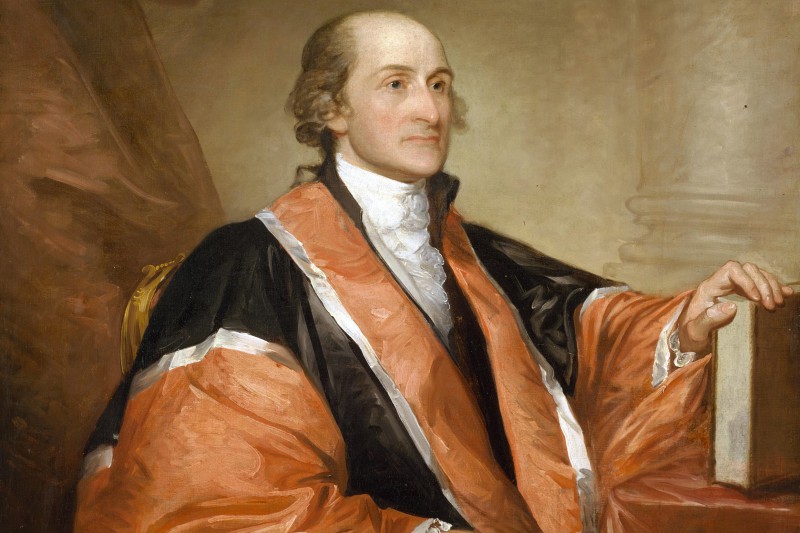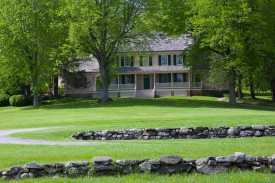John Jay by Ottavio Giovannozzi, after Giuseppe Ceracchi (JJ.1958.274)
John Jay posed for his portrait bust in terra cotta in 1792 with the famed Italian sculptor, Giuseppe Ceracchi. This is one of two marble copies of the bust that were carved in 1827 by Ottavio Giovannozzi. Jay was depicted in the guise of a Roman statesman, an allusion to the republican form of government the United States had adopted.
William Livingston attributed to John Watson (JJ.1982.88)
This childhood portrait of William Livingston, Sarah Jay’s father, was probably painted around 1730 by John Watson, one of America’s earliest portrait artists.
William Jay by Daniel Huntington (JJ.1958.304)
This portrait is of John Jay’s younger son, William Jay, and was painted around 1838. He was a prominent abolitionist. The artist, Daniel Huntington, was a favorite of the Jay family, and painted several portraits of them.
Colonel William Jay by John Singer Sargent (JJ.1986.2)
Colonel William Jay was John Jay’s great-grandson, and a veteran of the Civil War. This portrait of him was painted in 1888 by John Singer Sargent, the leading portrait artist of his day.
William Jay by John Vanderlyn (JJ.1974.132)
This is John Jay’s younger son, William Jay. The portrait was painted around 1819 by John Vanderlyn, America’s first artist to be formally trained in Paris. (Fine Art photo #5)
Palazzo della Regina Giovanna, Naples by Thomas Cole (JJ.1958.386)
This scene was painted around 1831 by the Hudson River School landscape painter, Thomas Cole. Cole was commissioned by Hickson Woolman Field (1788-1873), father of Eleanor Kingsland Field (Mrs. John Jay II). The artist’s initials “T.C.” are on the sail of a boat.
John Clarkson Jay by Samuel F.B. Morse (JJ.1982.1)
John Clarkson Jay, the subject of this small portrait, was a grandson of the Chief Justice. He became a physician. His portrait was painted around 1828 by Samuel F. B. Morse, seven years before Morse invented the telegraph.
John Paul Jones by Jean-Antoine Houdon (JJ.1958.242)
John Paul Jones, sometimes called the “Father of the United States Navy,” had his likeness taken by Jean-Antoine Houdon, France’s leading sculptor, in 1780. He had sixteen copies of the bust cast in plaster, and gave this one to John Jay in 1788. The marble original sits in the chapel at the US Naval Academy at Annapolis.
Sarah Livingston Jay and Her Children by James Sharples (JJ.1987.9)
The artist James Sharples did this pastel portrait of Sarah Livingston Jay and her two youngest children, William and Sarah Louisa, in 1798. The rescue of two baby birds from a fallen bird’s nest serves as a metaphor for Mrs. Jay’s maternal love and protection of her two small children.
John Jay by John Trumbull (JJ.1958.306)
The artist John Trumbull painted this portrait of John Jay around 1793, near the time he served as secretary on Jay’s mission to England to negotiate the Jay Treaty. It is the only portrait in the collection that John Jay actually sat for; all the other portraits of him at the Homestead are copies.
John Jay copy after Gilbert Stuart (JJ.1999.2)
Gilbert Stuart painted the original of this portrait of John Jay as U.S. Secretary for Foreign Affairs in 1784. This copy by another artist was apparently painted for Jay’s son, Peter Augustus, around 1810.




